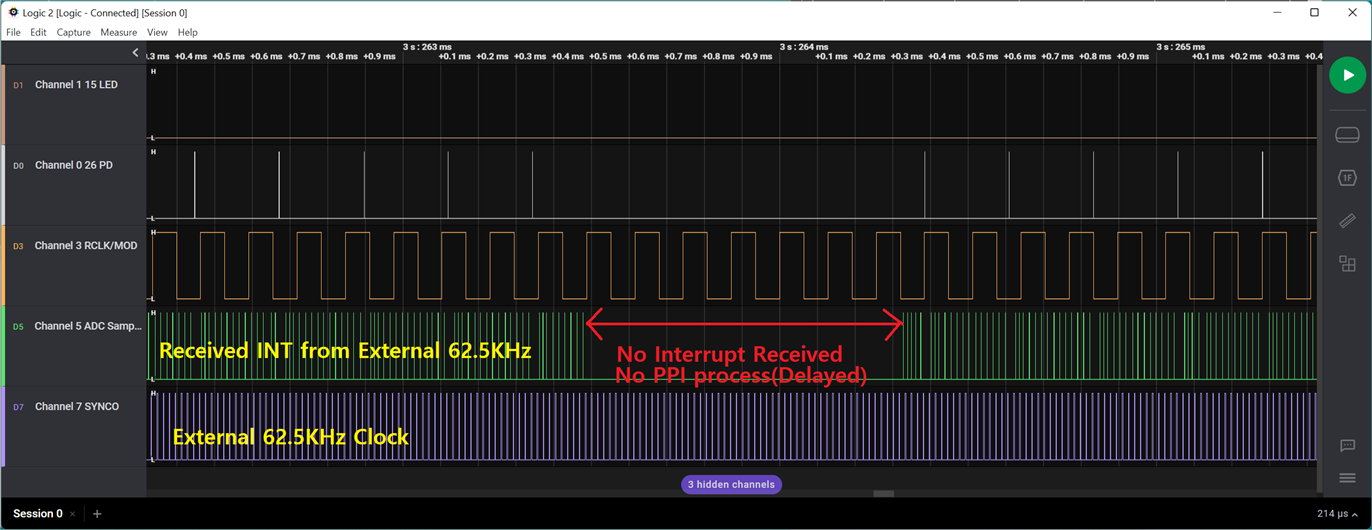Hello,
I implemented the function to receive an external 62.5KHz clock as an interrupt and repeat the process at a very regular time using PPI.
However, sometimes PPI processing is delayed(No interrupt received) as shown in the following figure. What could be the reason for this?

I guess the ability to receive an external 62.5KHz as an interrupt is delayed because of the interrupt inhibition of the MCU.
Is there a way to solve this interrupt receive delay and PPI delay?
Best Regards,
SunBae Yim.


